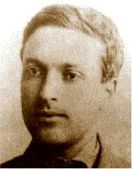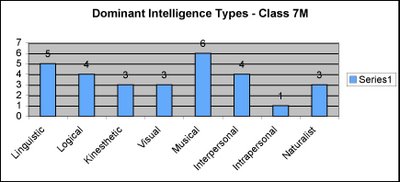
Jean Piaget
Piaget is usually quoted in the context of the early development of education theory and these days it is hard to even imagine the social context of his theories. He was writing in a time when children were regarded as little adults. Children were even dressed as little adults Consequently, a theory which challenged this by saying that children not only learned in different ways but they could not learn some things at the wrong time, was very much flying in the face of practices of the time.
Piaget posited the following necessary stages of development and like Steiner before him, spoke of the dire consequences of ignoring these stages and forcing an early or inappropriate education .
The four stages are:
Sensorimotor stage (Infancy). In this period (which has 6 stages), intelligence is demonstrated through motor activity without the use of symbols. Knowledge of the world is limited (but developing) because its based on physical interactions / experiences. Children acquire object permanence at about 7 months of age (memory). Physical development (mobility) allows the child to begin developing new intellectual abilities. Some symbolic (language) abilities are developed at the end of this stage.
Pre-operational stage (Toddler and Early Childhood). In this period (which has two substages), intelligence is demonstrated through the use of symbols, language use matures, and memory and imagination are developed, but thinking is done in a nonlogical, nonreversible manner. Egocentric thinking predominates.
Concrete operational stage (Elementary and early adolescence). In this stage (characterized by 7 types of conservation: number, length, liquid, mass, weight, area, volume), intelligence is demonstrated through logical and systematic manipulation of symbols related to concrete objects. Operational thinking develops (mental actions that are reversible). Egocentric thought diminishes.
Formal operational stage (Adolescence and adulthood). In this stage, intelligence is demonstrated through the logical use of symbols related to abstract concepts. Early in the period there is a return to egocentric thought. Only 35% of high school graduates in industrialized countries obtain formal operations; many people do not think formally during adulthood. Many pre-school and primary programs are modeled on Piaget's theory, which, as stated previously, provides part of the foundation for constructivist learning. Discovery learning and supporting the developing interests of the child are two primary instructional techniques. It is recommended that parents and teachers challenge the child's abilities, but NOT present material or information that is too far beyond the child's level. It is also recommended that teachers use a wide variety of concrete experiences to help the child learn (e.g., use of manipulatives, working in groups to get experience seeing from another's perspective, field trips, etc).
Piaget's research methods were based primarily on case studies [they were descriptive]. While some of his ideas have been supported through more correlational and experimental methodologies, others have not. For example, Piaget believed that biological development drives the movement from one cognitive stage to the next. Data from cross-sectional studies of children in a variety of western cultures seem to support this assertion for the stages of sensorimotor, preoperational, and concrete operations.
BEHAVIORAL VERSUS COGNITIVE APPROACH
http://copland.udel.edu/~jconway/EDST666.htm#cogapp
Prior to 1970 Behavioral Psychology formed the basis of how many teachers behaved in the classroom. Coupled with the traditional body of knowledge that made up a 'good' education this approach made sense. Now a basis in Cognitive Psychology seems to be a better method for preparing students to become lifelong learners. Advances in educational technology have contributed and supported this swing toward the Cognitive approach.
A brief background on each approach might be helpful.
Behavioral Approach
B.F. Skinner is considered the "grandfather of behaviorism". He generated much of the experimental data that is the basis of behavioral learning theory. He and other behavioral theorists were concerned mainly with observable indications of learning and what those observations could imply for teaching. They concentrated on observable 'cause and effect' relationships. Skinner and others viewed the teacher's job as modifying the behavior of students by setting up situations to reinforce students when they exhibit desired responses. Behaviorists viewed learning as a sequence of stimulus and response actions in the learner. They reasoned that teachers could link together responses involving lower-level skills and create a learning "chain" to teach higher-level skills. The teacher would determine all of the skills needed to lead up to the desired behavior and make sure students learned them all in a step-by-step manner. (Roblyer, Edwards, and Havriluk, 1997, p.59)
Cognitive Approach
Many educational psychologists found the behavioral approach unsatisfying. In the areas of problem solving and learning strategies they became more concerned with what was unobservable - what was going on inside the brain. These theories are based on the work of educational philosopher John Dewey, and educational psychologists Lev Vygotsky, Jean Piaget, Jerome Bruner among others. They propose that children actively construct knowledge and this construction of knowledge happens in a social context. Vygotsky proposed that all learning takes place in the 'zone of proximal development'. This 'zone' is the difference between what a child can do alone and what he/she can do with assistance. By building on the child's experiences and providing moderately challenging tasks teachers can provide the 'intellectual scaffolding' to help children learn and progress through the different stages of development.
The methods of constructivism emphasize students' ability to solve real-life, practical problems. Students typically work in cooperative groups rather than individually; they tend to focus on projects that require solutions to problems rather than on instructional sequences that require learning of certain content skills. The job of the teacher in constructivist models is to arrange for required resources and act as a guide to students while they set their own goals and 'teach themselves'. (Roblyer, Edwards, and Havriluk, 1997, p. 70
In looking at the role of I.C.T. in a Distributed Learning Environment I find it necessary to firstly gather information and define some of the terms used in language that is more familiar to me while attempting to begin synthesizing the academic studies.
Situated Learning http://tip.psychology.org/lave.html: This translates to learning that is connected to the context of the situation and comes as a result of participating in an activity or culture.Learning is usually unintentional rather than deliberate.......happening "By the way".Novices learn from experts in the context of every day activities.
For example activities that occur on class feild trips and camps
Last year I took my class on a geology excursion conducted by real fossickers.We were faced with a sudden torrential downpour just when the students were striking it lucky.Some wanted to head for home base immediatly while others were happy to tuff it out to collect the goods.This real life experience of battling with the elements, the hardships and frustrations the early gold diggers faced and the patience and perseverance required to succeed was invaluable compared to the "dry"teaching in the confines of a classroom .

Jean Lave
Lave argues that most classroom learning is abstract and out of context, and certainly if one was to merely listen to the cries of children who may say “When will we ever use this in real life?” one may never penetrate to the depths of the human being. One could successfully argue that the child needs to learn the skills of the culture in which they find themselves in order to achieve the benefits of that life or one could argue that higher order skills are learned from lets say, training the mind in skills such as mathematics. Either way it is up to the wisdom of the teacher or parent until the child is able to make these personal choices.

Lev Vygotsky
The major theme of Vygotsky's theoretical framework is that social interaction plays a fundamental role in the development of cognition. Vygotsky (1978) states: "Every function in the child's cultural development appears twice: first, on the social level, and later, on the individual level; first, between people (interpsychological) and then inside the child (intrapsychological). This applies equally to voluntary attention, to logical memory, and to the formation of concepts. All the higher functions originate as actual relationships between individuals." (p57).
A second aspect of Vygotsky's theory is the idea that the potential for cognitive development depends upon the "zone of proximal development" (ZPD): a level of development attained when children engage in social behavior. Full development of the ZPD depends upon full social interaction. The range of skill that can be developed with adult guidance or peer collaboration exceeds what can be attained alone. Vygotsky's theory was an attempt to explain consciousness as the end product of socialization. For example, in the learning of language, our first utterances with peers or adults are for the purpose of communication but once mastered they become internalized and allow "inner speech". Vygotsky’s “Zone of Proximal Development” suggests that learning is enhanced by children being engaged in social interaction. This plays a fundamental role in the development of cognition. The range of development with peer collaboration exceeds what can be attained alone. This is certainly born out by personal experience of “Home Schooled Children “ who often have trouble adapting to social situations in a classroom environment.
Constructivist Learning & Teaching http://www.cdli.ca/~elmurphy/emurphy/cle6.html: Building concepts anew. Teachers are often criticised for “reinventing the wheel” but from a teachers perspective it is so important to examine the often distorted basis of a concept or at least an understanding of, the origin of the concept or idea.

David Jonassen
Jonassen stresses the importance of exposing students to a multiplicity of perspectives of the world and while totally agreeing with the sentiment, one would also have to agree that this is probably a major shortcoming in teaching today. How we perceive knowledge and the process of coming to know provides the basis for educational practice. If we believe that learners passively receive information then priority in instruction will be on knowledge transmission. If, on the other hand, we believe that learners actively construct knowledge in their attempts to make sense of their world, then learning will likely emphasize the development of meaning and understanding. Constructivists generally claim that knowledge is not discovered and that the ideas teachers teach do not correspond to an objective reality. http://www.cdli.ca/~elmurphy/emurphy/cle.html

Jerome Bruner
A major theme in the theoretical framework of Bruner is that learning is an active process in which learners construct new ideas or concepts based upon their current/past knowledge. The learner selects and transforms information, constructs hypotheses, and makes decisions, relying on a cognitive structure to do so. Cognitive structure (i.e., schema, mental models) provides meaning and organization to experiences and allows the individual to "go beyond the information given".
As far as instruction is concerned, the instructor should try and encourage students to discover principles by themselves. The instructor and student should engage in an active dialog (i.e., socratic learning). The task of the instructor is to translate information to be learned into a format appropriate to the learner's current state of understanding. Curriculum should be organized in a spiral manner so that the student continually builds upon what they have already learned.
Bruner (1966) states that a theory of instruction should address four major aspects: (1) predisposition towards learning, (2) the ways in which a body of knowledge can be structured so that it can be most readily grasped by the learner, (3) the most effective sequences in which to present material, and (4) the nature and pacing of rewards and punishments. Good methods for structuring knowledge should result in simplifying, generating new propositions, and increasing the manipulation of information.
In his more recent work, Bruner (1986, 1990, 1996) has expanded his theoretical framework to encompass the social and cultural aspects of learning as well as the practice of law.
Scope/Application:
Bruner's constructivist theory is a general framework for instruction based upon the study of cognition. Much of the theory is linked to child development research (especially Piaget ). The ideas outlined in Bruner (1960) originated from a conference focused on science and math learning. Bruner illustrated his theory in the context of mathematics and social science programs for young children (see Bruner, 1973). The original development of the framework for reasoning processes is described in Bruner, Goodnow & Austin (1951). Bruner (1983) focuses on language learning in young children.
Distributed Learning environment:
http://techcollab.csumb.edu/techsheet2.1/distributed.html
More than chalk and Talk. "The distributed learning model can be used in combination with traditional classroom-based courses, with traditional distance learning courses, or it can be used to create wholly virtual classrooms." Learning can occur independently of time and place enabling learners to gain more control over how when and where their learning occurs.

Howard Gardner
Multiple Intelligences
Gardners work seems to be heading in the direction of the existence of more “intelligences“with three more under investigation ,namely Spiritual , Existential and Moral . Work by Steiner would suggest that the resulting Twelve Intelligences would be more complete.I suspect that Steiner would also agree with Gardner that the general public is not yet ready to accept such scientifically unsubstantiable intelligences .Steiner made it very clear however that all truths are substantiable by those who are willing to investigate them without prejudice and to test them accordingly.It is heartening to see that Gardner is at least attempting to test the boundaries and challenging people to think about broader ways of understanding the education of children.
Implementation in the classroom

Thomas Armstrong
Armtrong suggests asking the following questions
http://www.thomasarmstrong.com/articles/7_ways.htm
When Planning a Lesson, Ask the Right Questions!
Certain questions help me look at the possibilities for involving as many intelligences as possible:
Linguistic: How can I use the spoken or written word?
Logical-Mathematical: How can I bring in numbers, calculations, logic, classifications, or critical thinking?
Spatial: How can I use visual aids, visualization, color, art, metaphor, or visual organizers?
Musical: How can I bring in music or environmental sounds, or set key points in a rhythm or melody?
Bodily-Kinesthetic: How can I involve the whole body, or hands-on experiences?
Interpersonal: How can I engage students in peer or cross-age sharing, cooperative learning or large-group simulation?
Intrapersonal: How can I evoke personal feelings or memories, or give students choices?
Charts of Dominant Intelligences
The following charts represent a teachers perspective of the Eight Intelligences proposed by Howard Gardner as they relate to his class of 29 students .He found it difficult in most cases to decide on one dominant intelligence. When attempting to make the graph he became aware that each child was capable of operating from several different intelligences. As these children have been educated in a Steiner Primary school he was delighted to observe how the multi-faceted curriculum had resulted in such well balanced individuals able to express their intelligence in many different ways.


c) Higher Order Learning http://www2.selu.edu/Academics/Education/TEC/think.htm

David Perkins
I found the following guidelines by David Perkins very helpful in looking at how I could encourage higher-order thinking in my classroom.
III. How do I foster higher-order thinking in my classroom?
1. Set up a classroom environment which is conducive to high-level thinking.
A. Multi-level materials
B. Flexible grouping
C. Accept and celebrate diversity
D. Print-rich environment
E. High expectations
F. Teacher as co-learner
G. Nurture risk-taking
2. Engage students in activities which foster high-level thinking.
A. Collaborative group activities in which students can communicate with others in a variety of ways.
B. Problem-solving activities that require more than routine calculations.
C. Open-ended activities with more than one "right" answer.
D. Activities which accommodate multiple intelligences.
E. Activities in which both genders participate freely.
3. Construct questions that call for high-level thinking.
A. Ask yourself, "Do I always know the answer to my questions?"
B. Use a variety of assessment methods that match teaching strategies. For example, use a project for assessment instead of an end-of-unit test.
Action Research http://www.ncrel.org/sdrs/areas/issues/envrnmnt/drugfree/sa3act.htm
Action research is inquiry or research in the context of focused efforts to improve the quality of an organization and its performance. It typically is designed and conducted by practitioners who analyze the data to improve their own practice. Action research can be done by individuals or by teams of colleagues. The team approach is called collaborative inquiry.
Action research has the potential to generate genuine and sustained improvements in schools. It gives educators new opportunities to reflect on and assess their teaching; to explore and test new ideas, methods, and materials; to assess how effective the new approaches were; to share feedback with fellow team members; and to make decisions about which new approaches to include in the team's curriculum, instruction, and assessment plans.














